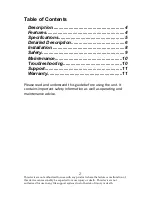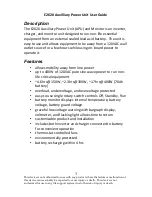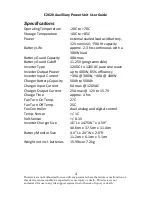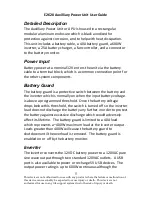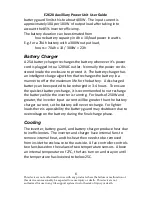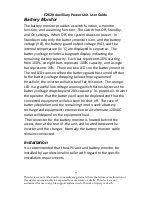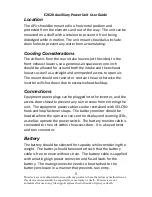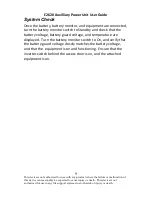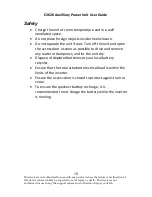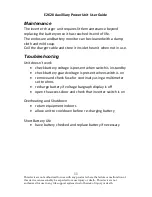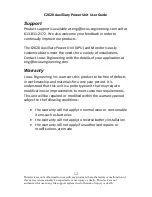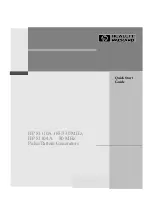
E2620 Auxilliary Power Unit User Guide
battery guard limits this to about 400W. The input current is
approximately 10A per 100W of output load after taking into
account the 85% inverter efficiency.
The battery duration can be estimated from
hours=battery capacity in Ah x 10/load power in watts
E.g. for a 70Ah battery with a 300W output load,
hours = 70Ah x 10 / 300W = 2.3h
Battery Charger
A 25A battery charger recharges the battery whenever it’s power
cord is plugged into a 120VAC outlet. Normally the power cord is
stored inside the enclosure to protect it. The battery charger has
an intelligent charge algorithm that recharges the battery in a
manner to offer the maximum life for the battery. A discharged
battery can be expected to be recharged in 3-4 hours. To ensure
the quickest battery recharge, it is recommended to not recharge
the battery while the inverter is running. For loads of 250W and
greater, the inverter input current will be greater than the battery
charger current, so the battery will never recharge. For lighter
loads there is a possibility the battery guard may shutdown due to
overvoltage on the battery during the final charge phase.
Cooling
The inverter, battery guard, and battery charger produce heat due
to inefficiencies. The inverter and charger have internal fans to
remove internal heat, and this heat then needs to be removed
from inside the enclosure to the outside. A fan controller controls
two fans based on the values of two temperature sensors. Above
an internal temperature of 27C, the fans turn on and stay on until
the temperature has lowered to below 25C.
6
This device is not authorized for use with any product where the failure or malfunction of
this device can reasonably be expected to cause injury or death. This device is not
authorized for use in any life support system due to the risk of injury or death.


